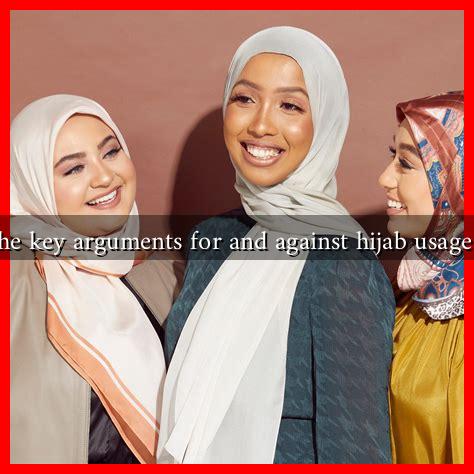-
Table of Contents
What are the Key Arguments for and Against Hijab Usage in Society?
The hijab, a traditional headscarf worn by many Muslim women, has become a focal point of debate in contemporary society. The discussions surrounding hijab usage often reflect broader themes of identity, freedom, and cultural expression. This article explores the key arguments for and against hijab usage, providing insights into the complexities of this issue.
Arguments in Favor of Hijab Usage
Supporters of hijab usage present several compelling arguments that highlight its significance in the lives of many women. Here are some of the key points:
- Religious Obligation: For many Muslim women, wearing the hijab is a religious duty rooted in Islamic teachings. The Quran encourages modesty, and the hijab is seen as a manifestation of this principle.
- Empowerment and Autonomy: Many women view the hijab as a symbol of empowerment. By choosing to wear it, they assert their autonomy and challenge societal norms regarding women’s appearance.
- Cultural Identity: The hijab serves as a marker of cultural identity for many women. It connects them to their heritage and community, fostering a sense of belonging.
- Protection from Objectification: Some women argue that wearing the hijab helps protect them from being objectified. By covering their hair and body, they feel that they are shifting the focus away from their physical appearance.
For instance, a study conducted by the Pew Research Center in 2017 found that 62% of Muslim women in the U.S. who wear the hijab feel it is an important part of their identity. This statistic underscores the significance of the hijab in the lives of many women.
Arguments Against Hijab Usage
On the other hand, there are several arguments against the hijab, often centered around issues of freedom, gender equality, and societal norms. Key points include:
- Symbol of Oppression: Critics argue that the hijab can be a symbol of oppression, particularly in societies where women are coerced into wearing it. They contend that it can represent patriarchal control over women’s bodies.
- Gender Inequality: Some feminists argue that the hijab perpetuates gender inequality by reinforcing traditional gender roles. They believe that women should have the freedom to choose how they dress without societal or religious pressure.
- Discrimination and Stigmatization: In many Western societies, women who wear the hijab may face discrimination and stigmatization. This can lead to social isolation and hinder their opportunities in education and employment.
- Secularism and Integration: In secular societies, the hijab is often viewed as a barrier to integration. Critics argue that it can create divisions between communities and hinder social cohesion.
For example, in France, the ban on wearing religious symbols, including the hijab, in public schools has sparked significant debate about secularism and individual rights. This case illustrates the tension between cultural expression and societal norms.
Case Studies and Real-World Implications
The debate over hijab usage is not merely theoretical; it has real-world implications. Countries like Iran and Saudi Arabia enforce strict dress codes, mandating the hijab for women. In contrast, nations like Turkey have oscillated between allowing and banning the hijab in public institutions, reflecting the complexities of secularism and religious freedom.
In Western countries, the hijab has become a symbol of both cultural identity and a point of contention. For instance, in Canada, the debate over the hijab has been highlighted in discussions about immigration and multiculturalism, with some advocating for greater acceptance and others calling for restrictions.
Conclusion
The arguments for and against hijab usage in society reveal a multifaceted issue that encompasses religious beliefs, cultural identity, gender equality, and individual freedom. While many women find empowerment and identity in wearing the hijab, others view it as a symbol of oppression and inequality. As societies continue to grapple with these complex issues, it is essential to foster open dialogue and understanding, recognizing that the choice to wear or not wear the hijab is deeply personal and varies widely among individuals.
Ultimately, the hijab debate serves as a microcosm of broader societal discussions about freedom, identity, and the role of women in contemporary society. Understanding these perspectives can help create a more inclusive and respectful dialogue around this significant cultural practice.
For further reading on this topic, you can explore resources from the Pew Research Center and other academic studies that delve into the implications of hijab usage in various societies.

